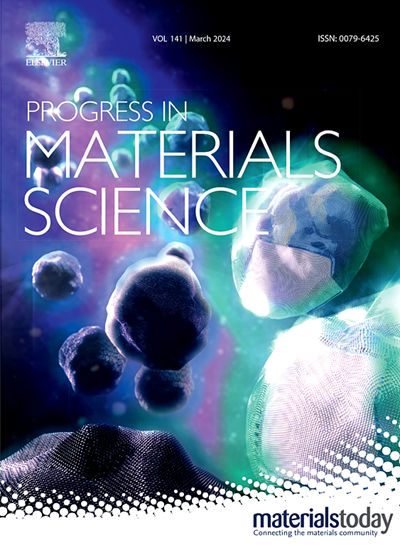Peptide-based co-assembling materials: Bridging fundamental science and versatile applications
IF 40
1区 材料科学
Q1 MATERIALS SCIENCE, MULTIDISCIPLINARY
引用次数: 0
Abstract
Inspired by biomolecular assembly in natural systems, peptides have emerged as building blocks for constructing diverse structures and materials through bottom-up self-assembly approach. However, it remains a challenge to manipulate the peptide supramolecular architectures and expand their functionality for versatile applications. Notably, co-assembly strategy provides a promising solution as it enables the integration of multiple components into extended architectural space and functional diversity of peptide-based materials. Herein, a comprehensive review is proposed to summarize the design principles and recent advances of peptide-based co-assembling materials for applications in biomedicine and nanotechnology. First, the design strategies and assembly mechanism of peptide co-assembly are introduced. Next, an overview of nanostructures formed by peptide co-assembly is summarized, ranging from nanoparticles, nanotubes, nanorods, nanoribbons to nanohydrogels. Subsequently, the various applications and perspectives for peptide co-assembling materials are provided in details, including anticancer treatment, tissue engineering, wound healing, gene delivery, catalysis, functional electronic components, and adhesive. Finally, remaining challenges and future prospects in peptide co-assembly are discussed. It is believed that this review bridges fundamental co-assembly science with extensive applications, providing new insights for rational design and development of innovative peptide-based biomaterials in the future.

肽基共组装材料:桥梁基础科学和多功能应用
受自然系统中生物分子组装的启发,肽已成为通过自下而上的自组装方法构建各种结构和材料的基石。然而,如何操纵肽超分子结构并扩展其功能以实现多功能应用仍然是一个挑战。值得注意的是,协同组装策略提供了一个有前途的解决方案,因为它可以将多个组件集成到扩展的建筑空间和肽基材料的功能多样性中。本文就肽基共组装材料的设计原理及在生物医学和纳米技术领域的应用进展进行了综述。首先,介绍了多肽共组装的设计策略和组装机理。其次,概述了肽共组装形成的纳米结构,从纳米颗粒、纳米管、纳米棒、纳米带到纳米水凝胶。随后,详细介绍了肽共组装材料的各种应用和前景,包括抗癌治疗、组织工程、伤口愈合、基因传递、催化、功能电子元件和粘合剂。最后,讨论了多肽共组装存在的挑战和未来的发展前景。相信这一综述将为基础的共组装科学与广泛的应用连接起来,为未来合理设计和开发创新的肽类生物材料提供新的见解。
本文章由计算机程序翻译,如有差异,请以英文原文为准。
求助全文
约1分钟内获得全文
求助全文
来源期刊

Progress in Materials Science
工程技术-材料科学:综合
CiteScore
59.60
自引率
0.80%
发文量
101
审稿时长
11.4 months
期刊介绍:
Progress in Materials Science is a journal that publishes authoritative and critical reviews of recent advances in the science of materials. The focus of the journal is on the fundamental aspects of materials science, particularly those concerning microstructure and nanostructure and their relationship to properties. Emphasis is also placed on the thermodynamics, kinetics, mechanisms, and modeling of processes within materials, as well as the understanding of material properties in engineering and other applications.
The journal welcomes reviews from authors who are active leaders in the field of materials science and have a strong scientific track record. Materials of interest include metallic, ceramic, polymeric, biological, medical, and composite materials in all forms.
Manuscripts submitted to Progress in Materials Science are generally longer than those found in other research journals. While the focus is on invited reviews, interested authors may submit a proposal for consideration. Non-invited manuscripts are required to be preceded by the submission of a proposal. Authors publishing in Progress in Materials Science have the option to publish their research via subscription or open access. Open access publication requires the author or research funder to meet a publication fee (APC).
Abstracting and indexing services for Progress in Materials Science include Current Contents, Science Citation Index Expanded, Materials Science Citation Index, Chemical Abstracts, Engineering Index, INSPEC, and Scopus.
 求助内容:
求助内容: 应助结果提醒方式:
应助结果提醒方式:


